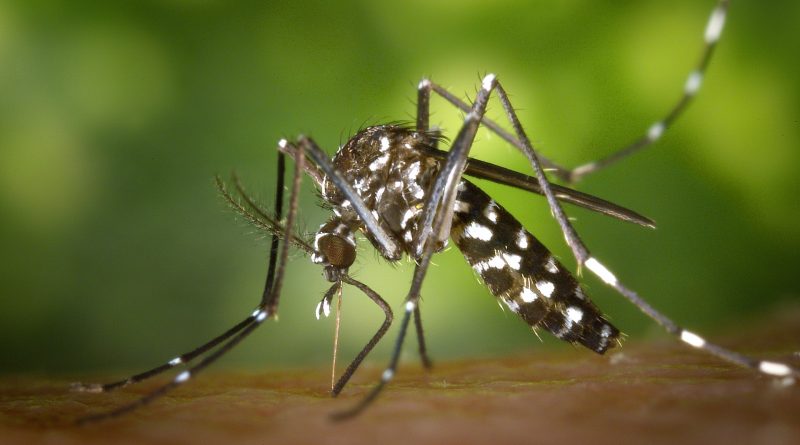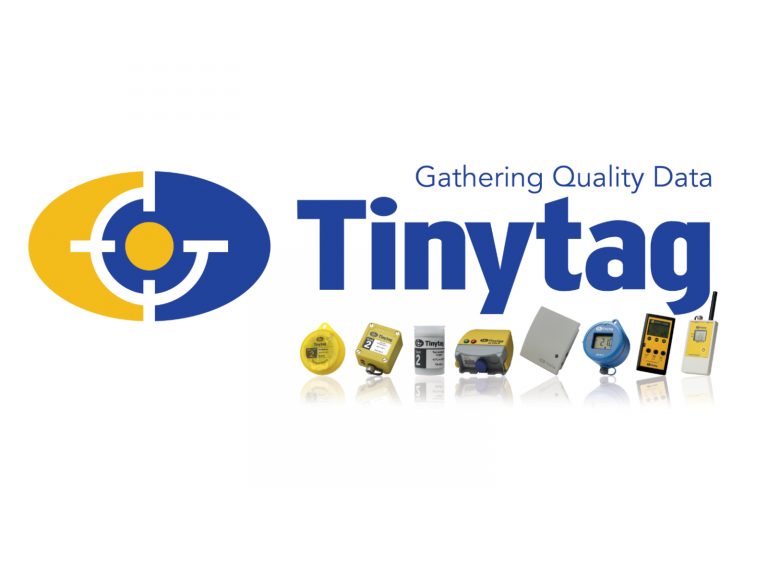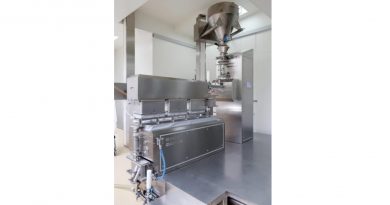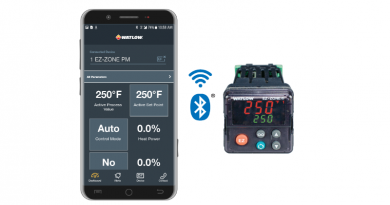Tanzanian Medical Research Facility Uses Tinytags to Monitor Temperature and Humidity
Temperature and relative humidity in laboratories and research facilities is being monitored with the Tinytag stand-alone data loggers and Radio Data Logging System.
Tinytags are utilised to monitor environmental variables at the medical research facility during the evaluation of insecticides and vector control equipment. Dr. Matt Kirby and his colleagues at the Kilimanjaro Christian Medical University College (KCMUCo) in Moshi, Tanzania, utilise Tinytag data loggers.
Dr. Kirby is a Lecturer in Medical Entomology at the London School of Hygiene and Tropical Medicine, as well as the Study Director for the KCMUCo’s PAMVERC (Pan African Malaria Vector Research Consortium). PAMVERC is a consortium of African research institutes and trial sites for the examination of insecticides and vector control tools. Vector control is a technique for limiting or eliminating the organisms, known as vectors, which transmit disease pathogens, most often mosquitos. The individual trial locations have extensive experience evaluating vector control products and have a long-standing collaboration with the London School of Hygiene and Tropical Medicine. Located in the foothills of Mount Kilimanjaro, KCMUCo shares the site with a regional hospital, a school of pharmacy, and a biotechnology laboratory.
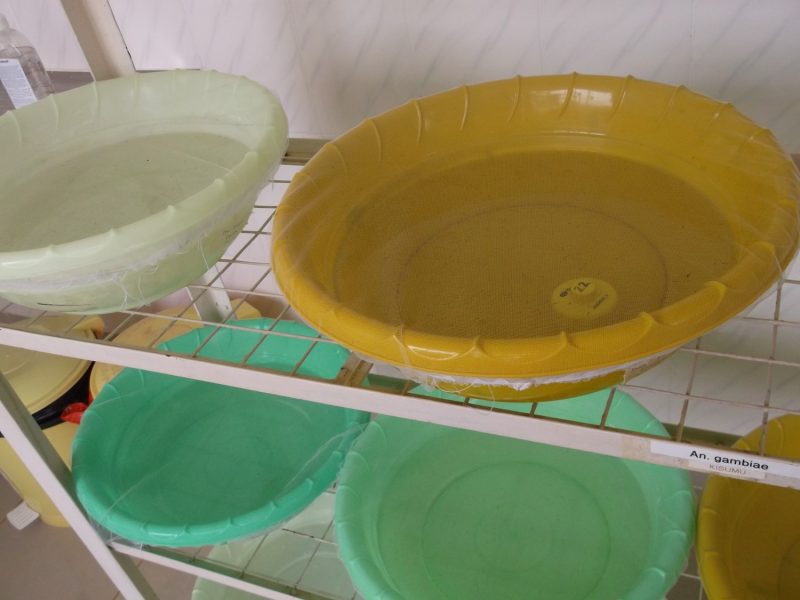
In the fields of malaria, HIV/AIDS, tuberculosis, non-communicable diseases, reproductive health, dermatology, and impairments, at present, there are 72 ongoing projects. The PAMVERC facilities include in particular an Insecticide Testing Facility, an insectary, an animal house, a molecular laboratory and three field stations in which insecticide-treated products are tested in a community setting.
Utilising a variety of Tinytag data loggers, environmental conditions, such as water temperatures, air temperatures, and humidity are being monitored in a number of locations. Tinytag Aquatic 2 data loggers monitor the range of water temperatures experienced by mosquito larvae in the insectary in larval breeding bowls. It’s critical to optimise the environmental conditions that larvae are exposed to, in order to increase adult productivity for testing against insecticides.
Temperature has a significant impact on larval growth; at low temperatures, they develop very slowly, and at high temperatures, they either die or do not amass enough energy reserves, resulting in adults that are unsuitable for testing. Developing assays of insecticide-treated bed nets and other insecticide-treated surfaces also have to be carried out in a laboratory under strictly controlled conditions.
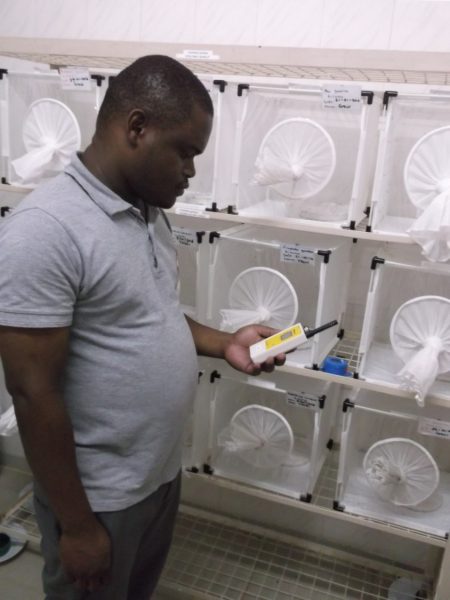
For these processes, 12 Tinytag View 2 temp/RH data loggers are deployed to monitor the conditions on benchtops, in fridges, in chemical storerooms, and in incubators. The objective is to demonstrate how fast and how efficiently insecticides would kill mosquitos, and a control group that isn’t exposed to the insecticides will serve as a benchmark. It is essential that the assays are conducted under conditions that are optimal for the control group, so that none or only a small number of them die.
Mosquitoes are inherently sensitive to low humidity because they have a limited water reserve and desiccate fast. Therefore, assays are commonly run at a narrow range: 27°C ±2 and 75%RH±10. In addition, temperature affects the effectiveness of some insecticides that influence respiratory pathways.
Trials of vector control tools, such as bed nets and insecticide sprayed on walls, are performed in the local community, and temperature is recorded using four Tinytag Plus 2 temp/RH data loggers located inside and outside the participants’ properties. The nocturnal activity and behavior of mosquitoes is highly impacted by environmental conditions, and it is important to analyse the data and make allowances/adjustments for changes in the environment each week. In the field insectaries, two hand-held thermohygrometers are employed. Because there are no computers in these sites (due to a lack of dependable energy), hand-held equipment is required to which the data can be uploaded from other types of loggers.
The handheld devices have proven to be effective since they provide rapid readings and have a fast adjustment response to being moved around. The screen shows the readings, which can be documented on paper record sheets. Additionally to the stand-alone units, 12 Tinytag Ultra Radio temp/RH data loggers are mounted on a wall in each laboratory room, in the insectary, the animal house and the store of insecticide-treated bed nets.
PAMVERC at KCMUCo is undergoing an internationally-recognised audit of Good Laboratory Practice. Under this scheme, they have to perform experiments under carefully controlled, pre-defined, repeatable, and reliable conditions. Monitoring environmental conditions is an essential part of this process.
The Ultra Radio loggers have been found to be especially useful in this regard because they have been set up in these various locations, communicating back to a centrally located receiver linked to a laptop dedicated to running the Tinytag Explorer software. This laptop is hosted on a server with a global IP and is accessible to office desktops, so all the senior management can check the data from the Ultra Radio loggers in real-time and take corrective action immediately should any reading be out of range. All of the premises are equipped with thermostatically controlled heaters, hygrostatically controlled humidifiers, and A/C units that may be relocated or adjusted as needed to swiftly return the environment to an appropriate level.
Chemicals that are temperature sensitive and other test items in fridges and freezers are also monitored. In the event of a power cut when the fridges go out of acceptable range, this must be reported to the trial sponsor and a decision made as to whether this has had a negative impact on the trial, namely whether the results from those test items should be disregarded, the test redone, or the entire protocol restarted.
Dr. Matt Kirby initially selected Tinytags because of their good reputation. Several of the team’s project supervisors, as well as Dr. Kirby himself, had employed various other loggers in prior trial locations in Africa. The Radio System is a personal favourite not just because it offers instant access to data, but also due to its ability to group the units in the output display (there are separate facilities each with several units), to bring up and project graphs of the data easily, and crucially, to configure alarm ranges for each unit independently and to have those flash on laptop screens.
This permits any issues to be identified quickly and corrective action to be taken immediately. Potentially, this ability saves repeating dozens of experiments each month that would otherwise have been performed under sub-optimal environmental conditions.
Dr Kirby concluded:
“The various Tinytag loggers used by PAMVERC have been easy to install and operate, and are suited to a wide range of situations. They are appropriate for laboratories requiring calibrated, accurate and reliable environmental monitoring. We are highly satisfied with them and will continue to purchase more units as our facility expands.”

